Ziqi Zhu
Can Small Language Models Reliably Resist Jailbreak Attacks? A Comprehensive Evaluation
Mar 09, 2025Abstract:Small language models (SLMs) have emerged as promising alternatives to large language models (LLMs) due to their low computational demands, enhanced privacy guarantees and comparable performance in specific domains through light-weight fine-tuning. Deploying SLMs on edge devices, such as smartphones and smart vehicles, has become a growing trend. However, the security implications of SLMs have received less attention than LLMs, particularly regarding jailbreak attacks, which is recognized as one of the top threats of LLMs by the OWASP. In this paper, we conduct the first large-scale empirical study of SLMs' vulnerabilities to jailbreak attacks. Through systematically evaluation on 63 SLMs from 15 mainstream SLM families against 8 state-of-the-art jailbreak methods, we demonstrate that 47.6% of evaluated SLMs show high susceptibility to jailbreak attacks (ASR > 40%) and 38.1% of them can not even resist direct harmful query (ASR > 50%). We further analyze the reasons behind the vulnerabilities and identify four key factors: model size, model architecture, training datasets and training techniques. Moreover, we assess the effectiveness of three prompt-level defense methods and find that none of them achieve perfect performance, with detection accuracy varying across different SLMs and attack methods. Notably, we point out that the inherent security awareness play a critical role in SLM security, and models with strong security awareness could timely terminate unsafe response with little reminder. Building upon the findings, we highlight the urgent need for security-by-design approaches in SLM development and provide valuable insights for building more trustworthy SLM ecosystem.
Predictive Accuracy-Based Active Learning for Medical Image Segmentation
May 01, 2024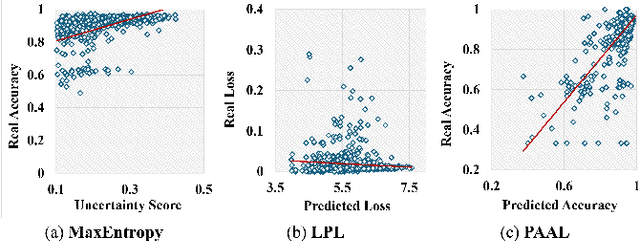

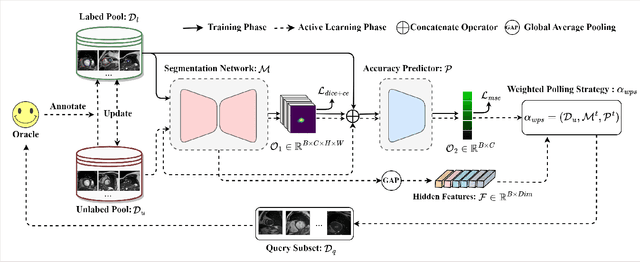

Abstract:Active learning is considered a viable solution to alleviate the contradiction between the high dependency of deep learning-based segmentation methods on annotated data and the expensive pixel-level annotation cost of medical images. However, most existing methods suffer from unreliable uncertainty assessment and the struggle to balance diversity and informativeness, leading to poor performance in segmentation tasks. In response, we propose an efficient Predictive Accuracy-based Active Learning (PAAL) method for medical image segmentation, first introducing predictive accuracy to define uncertainty. Specifically, PAAL mainly consists of an Accuracy Predictor (AP) and a Weighted Polling Strategy (WPS). The former is an attached learnable module that can accurately predict the segmentation accuracy of unlabeled samples relative to the target model with the predicted posterior probability. The latter provides an efficient hybrid querying scheme by combining predicted accuracy and feature representation, aiming to ensure the uncertainty and diversity of the acquired samples. Extensive experiment results on multiple datasets demonstrate the superiority of PAAL. PAAL achieves comparable accuracy to fully annotated data while reducing annotation costs by approximately 50% to 80%, showcasing significant potential in clinical applications. The code is available at https://github.com/shijun18/PAAL-MedSeg.
Pruner: An Efficient Cross-Platform Tensor Compiler with Dual Awareness
Feb 04, 2024Abstract:Tensor program optimization on Deep Learning Accelerators (DLAs) is critical for efficient model deployment. Although search-based Deep Learning Compilers (DLCs) have achieved significant performance gains compared to manual methods, they still suffer from the persistent challenges of low search efficiency and poor cross-platform adaptability. In this paper, we propose $\textbf{Pruner}$, following hardware/software co-design principles to hierarchically boost tensor program optimization. Pruner comprises two primary components: a Parameterized Static Analyzer ($\textbf{PSA}$) and a Pattern-aware Cost Model ($\textbf{PaCM}$). The former serves as a hardware-aware and formulaic performance analysis tool, guiding the pruning of the search space, while the latter enables the performance prediction of tensor programs according to the critical data-flow patterns. Furthermore, to ensure effective cross-platform adaptation, we design a Momentum Transfer Learning ($\textbf{MTL}$) strategy using a Siamese network, which establishes a bidirectional feedback mechanism to improve the robustness of the pre-trained cost model. The extensive experimental results demonstrate the effectiveness and advancement of the proposed Pruner in various tensor program tuning tasks across both online and offline scenarios, with low resource overhead. The code is available at https://github.com/qiaolian9/Pruner.
H-DenseFormer: An Efficient Hybrid Densely Connected Transformer for Multimodal Tumor Segmentation
Jul 04, 2023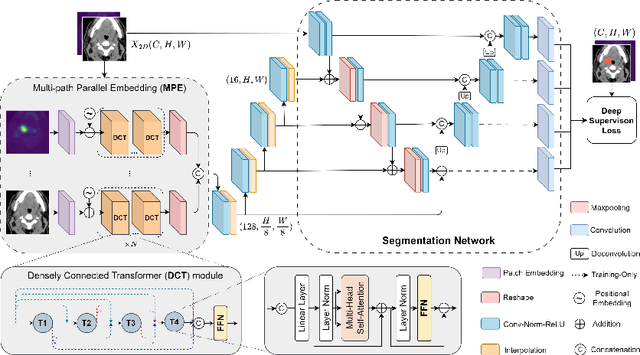

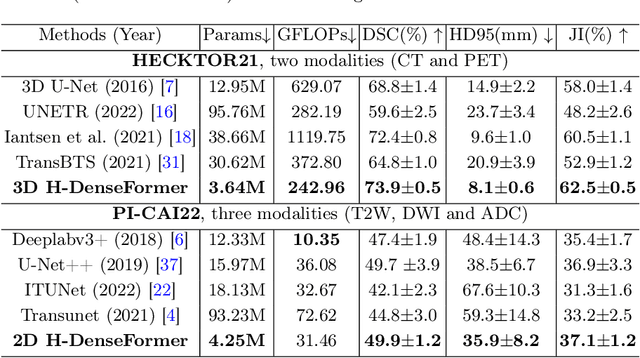
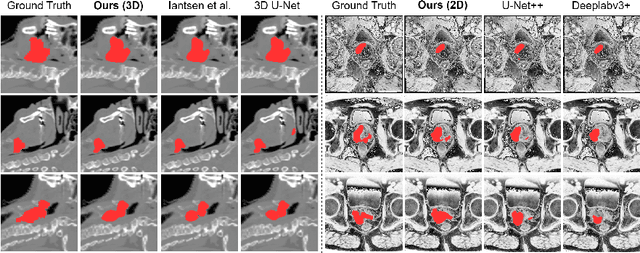
Abstract:Recently, deep learning methods have been widely used for tumor segmentation of multimodal medical images with promising results. However, most existing methods are limited by insufficient representational ability, specific modality number and high computational complexity. In this paper, we propose a hybrid densely connected network for tumor segmentation, named H-DenseFormer, which combines the representational power of the Convolutional Neural Network (CNN) and the Transformer structures. Specifically, H-DenseFormer integrates a Transformer-based Multi-path Parallel Embedding (MPE) module that can take an arbitrary number of modalities as input to extract the fusion features from different modalities. Then, the multimodal fusion features are delivered to different levels of the encoder to enhance multimodal learning representation. Besides, we design a lightweight Densely Connected Transformer (DCT) block to replace the standard Transformer block, thus significantly reducing computational complexity. We conduct extensive experiments on two public multimodal datasets, HECKTOR21 and PI-CAI22. The experimental results show that our proposed method outperforms the existing state-of-the-art methods while having lower computational complexity. The source code is available at https://github.com/shijun18/H-DenseFormer.
3D IoU-Net: IoU Guided 3D Object Detector for Point Clouds
Apr 10, 2020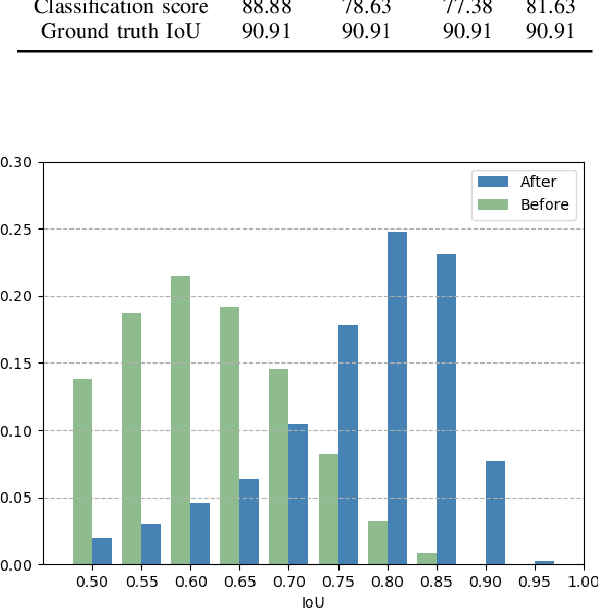
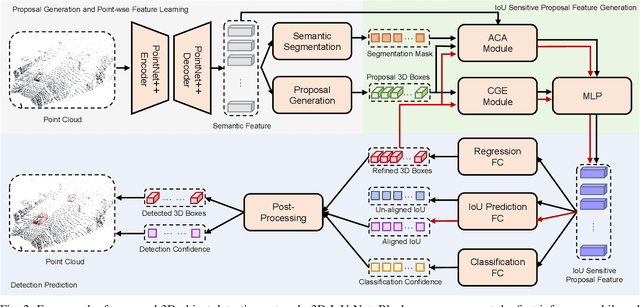
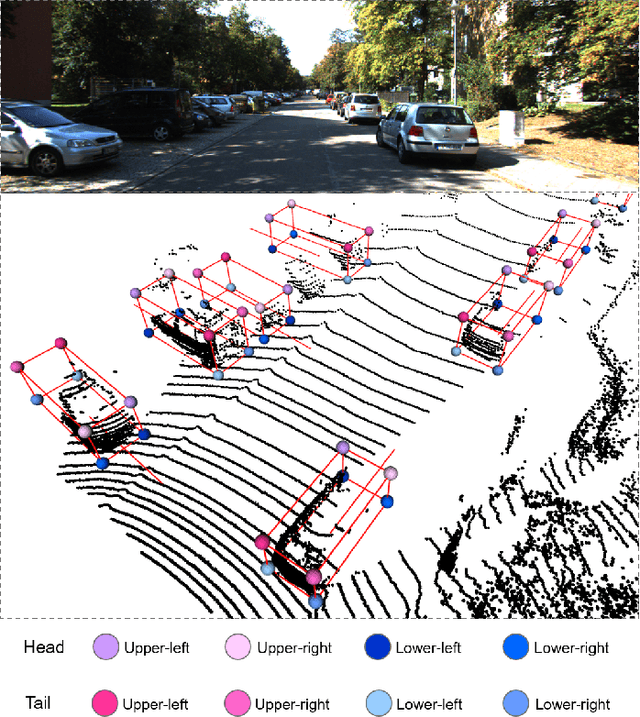
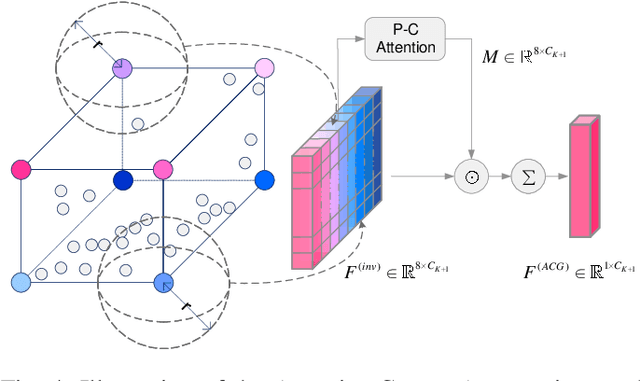
Abstract:Most existing point cloud based 3D object detectors focus on the tasks of classification and box regression. However, another bottleneck in this area is achieving an accurate detection confidence for the Non-Maximum Suppression (NMS) post-processing. In this paper, we add a 3D IoU prediction branch to the regular classification and regression branches. The predicted IoU is used as the detection confidence for NMS. In order to obtain a more accurate IoU prediction, we propose a 3D IoU-Net with IoU sensitive feature learning and an IoU alignment operation. To obtain a perspective-invariant prediction head, we propose an Attentive Corner Aggregation (ACA) module by aggregating a local point cloud feature from each perspective of eight corners and adaptively weighting the contribution of each perspective with different attentions. We propose a Corner Geometry Encoding (CGE) module for geometry information embedding. To the best of our knowledge, this is the first time geometric embedding information has been introduced in proposal feature learning. These two feature parts are then adaptively fused by a multi-layer perceptron (MLP) network as our IoU sensitive feature. The IoU alignment operation is introduced to resolve the mismatching between the bounding box regression head and IoU prediction, thereby further enhancing the accuracy of IoU prediction. The experimental results on the KITTI car detection benchmark show that 3D IoU-Net with IoU perception achieves state-of-the-art performance.
 Add to Chrome
Add to Chrome Add to Firefox
Add to Firefox Add to Edge
Add to Edge